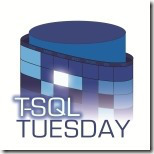For this month’s T-SQL Tuesday Steve Jones asks us to talk about our experiences with Triggers:
https://voiceofthedba.com/2018/09/03/t-sql-tuesday-106-trigger-headaches-or-happiness/
In my post I’m going to focus on DML (Data Modification Language) triggers. Their counterparts, DDL (Data Definition Language) triggers have any number of interesting applications. It’s usually DML triggers however that attract the most controversy.
DML triggers seem like a great functionality when you first discover them in your SQL career, especially if you come from an application coding background. Event driven programming for data – sounds brilliant. If someone does something to table X, have a trigger than in turn does something to tables Y and Z, you can even have triggers on Y and Z and cascade actions to other tables and beyond.
Once you’ve been around for a while though you realise what a headache this can end up being. You think you’re just inserting a record into table X but there’s this whole bunch of stuff going on behind the scenes that you may not know about – or want.
This is the biggest objection to triggers. They hide logic. If I have table called FeeTransaction and there is a bunch of logic that MUST happen when I insert a record here, then that’s clearer if it’s all encapsulated in a stored procedure that inserts the record. That makes it easier to maintain and troubleshoot rather than hunting around to find independent events that might be kicking off all over the place.
The only place I’m really a fan of DML triggers is in capturing Audit information. Most commonly for maintaining basic things like the last updated date and time for a record. I like having a mechanism that means I can see when data was last changed – whatever method was used to change it. i.e. if it was through the application, or if someone with write-access just ran an update query. Then I don’t need to rely on that person remembering to alter the LastUpdated column when they made their change.
The need to maintain this sort of basic audit info is so ubiquitous that it seems silly it is not a core feature of SQL Server, i.e. the ability to add a column to a table that will always automatically capture the time a record was modified, presumably this could also be done in a tamper-proof manner. In the same way we could have the ability to capture the Login context used to make the change or potentially anything else we need to capture.
Adam Machanic has raised a request with Microsoft to include functionality, if you agree it would be handy then please upvote here:



